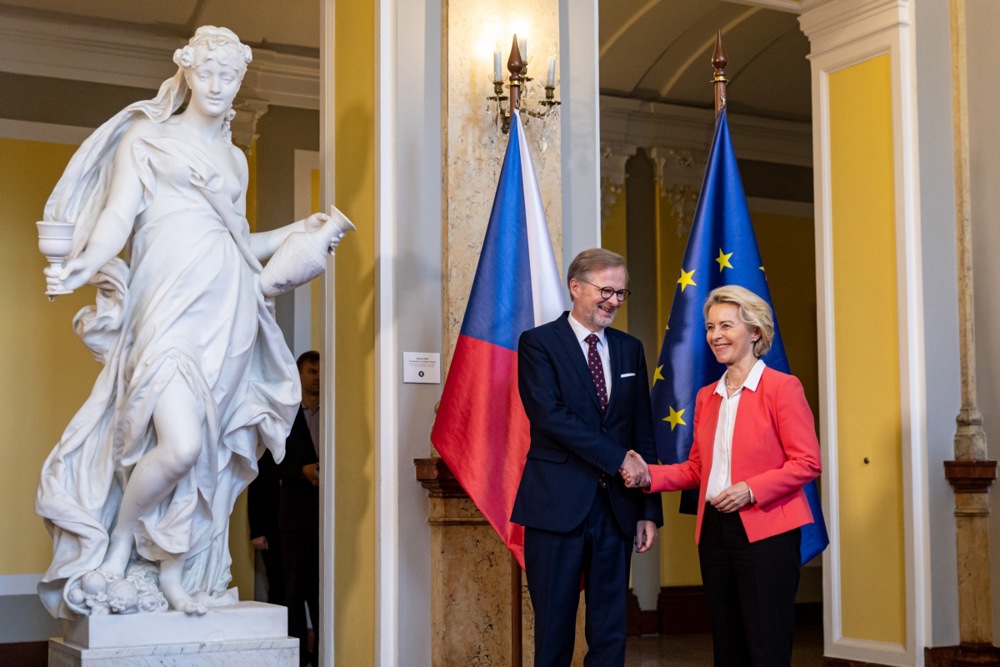The European Conservatives and Reformists (ECR) group held a conference titled Wind energy – at what cost? in Brussels on October 10 where speakers voiced concerns regarding the development of the wind-energy industry.
European decision-makers have been generally in favour of using more renewable energy in the push to achieve climate neutrality and end polluting emissions. Against that, according to a number of experts at the conference, the proposed cure is potentially worse than the disease.
Hosted by Johan Nissinen (Sweden Democrats) and Rob Roos (ex-Ja21, now independent), the event illustrated perceived problems in the Netherlands and Sweden and featured speeches by renowned environmentalists and some non-academics.
Roos stressed that the focus ought to be on the wind industry as it has become big business, receiving huge amounts in government subsidies. He also lamented what he said was the European tendency to be blindly positive about it and unwilling to consider possible downsides.
To highlight those downsides, prominent scientists were invited to speak, including Dr Per Hansson, an associate professor in forestry and an experienced ornithologist who holds a Master’s degree in Land and Environmental Law. He highlighted what he said were the devastating effects of wind farms on birds.
It was pointed out that while wind was free, and green, much else associated with the wind-energy industry was far from it.
For example, according to Hansson, crane birds and raptors are suffering as their migratory trajectories are impacted due to the expansion of wind farms across Europe. He said when new wind farms are being built, such effects are not sufficiently studied or taken into account.
The damage wind-farm rotor blades can cause birds also does not receive the attention it should, according to Hansson. He claimed that traditional environmentalists do not even want to consider his warnings.
Dr Corinna Schrum, Director of the Institute of Coastal Systems at the Hereon research institute, is an expert on marine life and also has connections with the University of Hamburg. She also outlined negative issues regarding offshore wind-farms.
In her speech, Schrum highlighted the possible adverse effects of European wind-energy plans in the North Sea, warning they might damage marine life and biodiversity in those waters.
She added that, already, the environment is being impacted. In particular, sea currents and the atmosphere are being negatively affected by large offshore wind-farms.
Another speaker was Professor Lucas Bergkamp, author of the study Road to EU Climate Neutrality by 2050. He highlighted that the study seemed to prove another fundamental problem with wind farms – the significant amount of space such facilities take up.
Bergkamp accused the European Union of not making any meaningful impact assessment of green energy, which he said was due to the bloc’s excessive, single-minded focus on climate goals. Adverse effects are being ignored and disregarded, he claimed.
His main focus was on energy density, the physical area required to produce such green energy. In the case of wind, he said the situation was a serious concern, even when being optimistic about wind technology.
For example, he said in the Czech Republic between one fifth and half of the available land there would need to be covered to generate enough energy via wind and solar. He added that, on the other hand, nuclear power-production would need no more than 269 square kilometres.
In the Netherlands it was even worse, Bergkamp claimed. He said between 24,538 sqkm and 68,482 sqkm, or between half and almost double the area of the entire country would be required for wind and solar energy production. Nuclear power facilities would only need 120 sqkm, he said.
“Thus, due to their low power density, wind energy requires at least 266 [offshore] to 534 [onshore] times more land and space than nuclear,” Bergkamp concluded.
Roos pointed out there were also worrying issues over the costs of mining and production, waste disposal, the need for back-up power and infrastructure, among other challenges.
The British academic Dr. John Constable noted that while proponents trumpet the fact that wind is free, production and delivery of wind energy costs money, making such power relatively expensive.
He added that being a highly irregular source, the amount of wind energy available at any one time is also unreliable.
Constable pointed out that the problematic nature of wind energy was why no living organism on the planet used such a form of power for their metabolic systems. That should be seen as a telling sign, he said.
He further noted that wind-energy costs in the UK have increased tenfold and queried just how “sustainable” the industry really was, given the vast and rising subsidies needed.
Non-academics also spoke of their experiences of the impact of wind farming.
Karin Bångman told the audience about the effect of Project Kaxås, which was set up to attract people to live closer to nature. As a result, in the sparsely populated area where she resides in Sweden, she said she was confronted with an enormous wind farm nearby, ruining the quality of life for her community.
Job Schot, a Dutch fisherman, painted a bleak picture of how the situation at sea had deteriorated in the past decade.
He told attendees he had been forced to end his fishing business as offshore wind-farm developments had led to large-scale industrialisation of the North Sea, destroying marine life and biodiversity.
? While nuclear requires a tiny bit of land to provide a whole lot of energy at low cost, wind and solar require a whole lot of land to provide a tiny bit of energy at high cost
? Thanks to all participants in the conference Wind industry — at what cost? hosted by… pic.twitter.com/nUuYZUb6D2
— ECR Group (@ecrgroup) October 10, 2023





